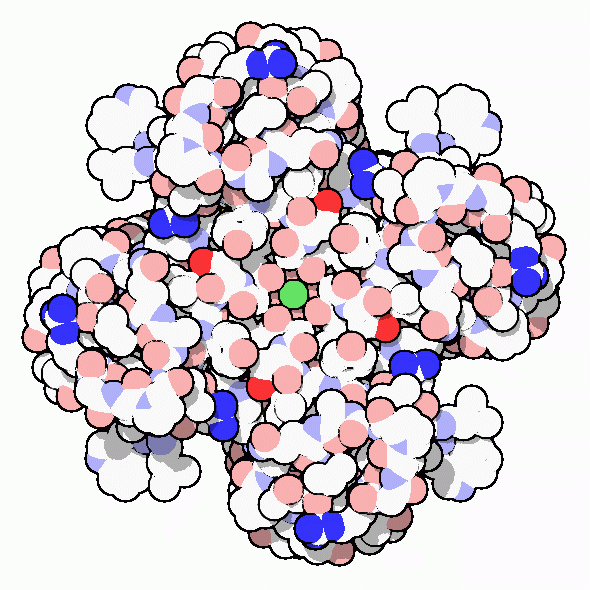|
Inhaltsübersicht | Nanomaschinen | Moleküle | Programme | Kurse | Fun | Links |
||
| > |
Potassium Channels

All living cells are surrounded by a membrane that separates the watery world inside from the environment outside. Membranes are effective barriers for small ions (as well as for large molecules like proteins and DNA), providing a novel opportunity: differences in ion levels may be used for rapid signaling. For instance, a cell can raise the level of potassium ions inside it. Then, at a moment's notice, potassium can be released through channels in the membrane, creating a large change in the potassium level that will be felt throughout the cell. This process is used in all types of cells - bacteria, plants and animals. Two common examples of ion channels at work are seen in muscle contraction (which is started by the release of calcium ions), and nerve signaling (which involves a complex flow of sodium and potassium ions).
Ion Channels in Nerve Signals
When you smell a flower and know that it is a rose, or touch a hot object and immediately pull your hand away, nerves from your nose and hands use the release of ions to send signals to your brain and relay back the appropriate response. Nerve cells ready themselves for sending a signal by concentrating potassium ions inside and selectively pumping sodium ions out. This creates a difference in electrical potential across the cell membrane. To send a signal, sodium channels along the nerve open, allowing sodium to enter and reducing the voltage across the membrane. Potassium channels then open, letting the potassium ions out and re-establishing the original voltage. Other channels and pumps later reset the distribution of sodium and potassium ions inside and outside the cell. By clever design, both of these channels are sensitive to the voltage across the membrane, opening when the voltage changes. So, when the channels are opened at one end of a nerve cell, the flow of ions there instantly triggers channels further down the membrane to open. The result is a wave of channels opening that rushes down the nerve cell, carrying the nerve signal to the end.Potassium Channels
Potassium channels are designed to allow the flow of potassium ions across the membrane, but to block the flow of other ions--in particular, sodium ions. These channels are typically composed of two parts: the filter, which selects and allows potassium but not sodium to pass, and the gate, which opens and closes the channel based on environmental signals. The structure shown here, from PDB entry 1bl8, shows the filter portion of a bacterial potassium channel. It is comprised of four identical protein molecules that span the width of the membrane, forming a selective pore down the center. Potassium ions, shown in green, flow freely through it, at rates of up to one hundred million ions per second. But it is also remarkably selective--it allows only one sodium ion to pass for every ten thousand potassium ions. As shown on a later page, crystallographic structures of this channel show how this is accomplished.Next: Open and Shut
Last changed by: A.Honegger,